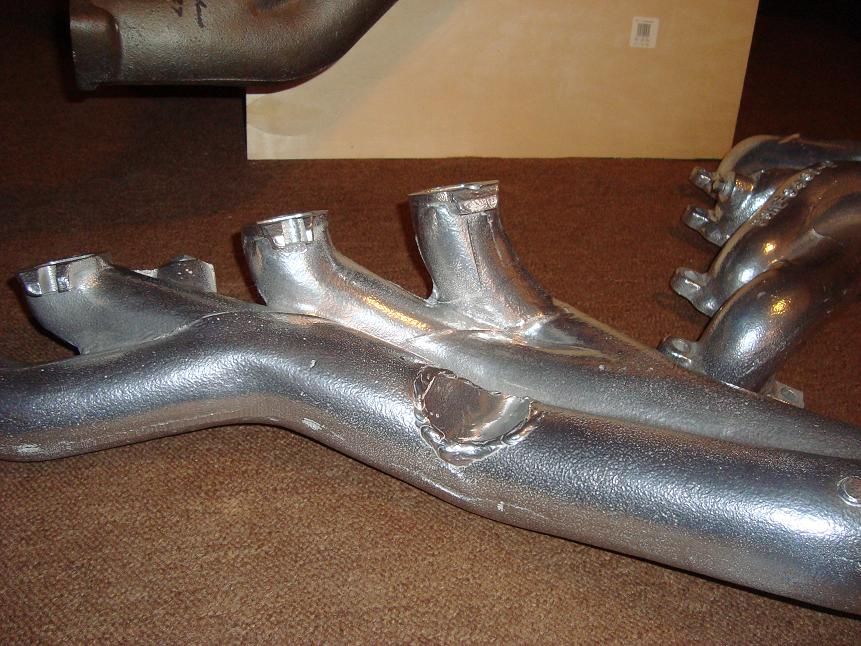I don't know if I have anything to help or not, but for discussion - I have a few sets of 427 long cast exhaust manifolds, both '63-'64 style and '65-67 style. One set I have of the '63-'64 manifolds was modified sometime in it's past ( a chunk was removed, turned around and re-welded back ). Here's a picture:

I don't know why it was done, but when I read people mention issues with trying to use later style starters with early manifolds I thought maybe that was why. Meanwhile, going back in time here a few years to when Jay was doing his dyno testing of exhaust manifolds for his book, he was using a different set of my '63-'64 long cast headers on the dyno. I mentioned to him about my modified manifold and wondering if starter clearance might be why. Jay usually uses a mini-starter, but I remember us checking fit with a later style stock Ford starter and I thought we found the later starter fit fine. Now my memory isn't always perfect, maybe Jay remembers when we did this? Keep in mind this was with the non modified manifold. I think we also came to the conclusion that the area on my modified manifold wasn't near the starter, so the mystery remained.
One thought I have here - Jay uses a scattershield bellhousing on the dyno for a later starter - are you trying the later starter on the older style bellhousing? Is that even possible? I don't know. My thought just being maybe the starter is in a different spot.
I will say, even though the '63-'64 long manifolds are very similar to the '65-'67 long manifolds ( which used the later starter ) they aren't exactly the same. The cylinder #1 & #2 branch is kicked out a little bit on the later manifolds compared to the earlier manifolds. I don't know if it is even enough to show up on a picture. Maybe that gives some clearance?
One other thought - the bump on the starter should face upward ( toward the head ), and not outward ( toward the frame ). Is your starter "clocked" correctly?